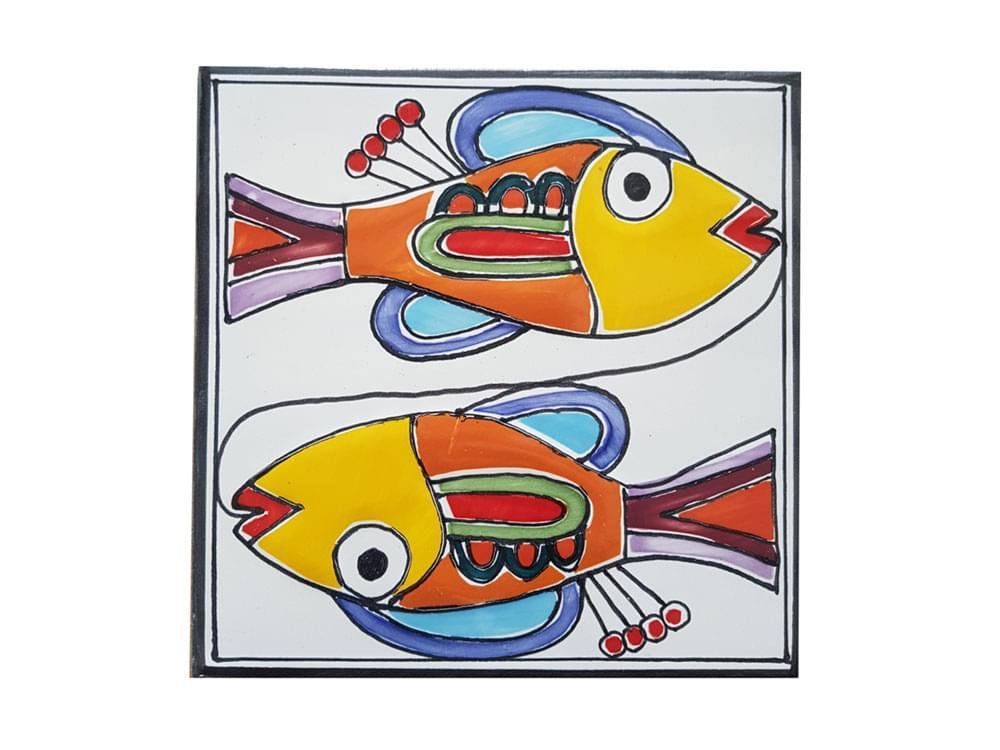
Arranged like an amphitheatre on the sea, Corricella is reached either by boat or by descending a series of steps from the higher village levels.
The island of Procida, less than 4.1 km², lies off the coast of Naples in the Gulf of Naples and is part of the Phlegraean Islands.
Corricella itself is the oldest seaside village on Procida, the ancient fishing port which saw generations of fishermen, net-menders and small boat-builders shaping its character. Over the centuries the island’s strategic position between Cape Miseno and the island of Ischia meant that it witnessed ancient Greek settlers, Roman villas, medieval fortifications and pirate raids.
One of the most striking features of Corricella is the vibrant colours of its houses. Each building is painted in differing pastel hues, arranged on the slope facing the sea. This tradition is said to have helped fishermen recognise their houses from the water.
The village is built along staircases and narrow alleys rather than broad roads or promenades. Two of the main routes down to the harbour are the Gradinata del Pennino and the Gradinata Scura. The effect is dramatic: facades, domes, arches, loggias and stairwells all interlaced in a picturesque tangle above the quay.
Corricella remains a working fishing village. Nets drying on the quay, boats moored in the harbour and the unmistakable smell of salt and sea air define its atmosphere. The absence of motor-traffic within the village adds to the sense of timelessness and quiet.
The harbour is small yet full of life: fishermen setting out early, returning with their catch, children playing by the water’s edge, and visitors wandering the steps, pausing for gelato or a cooling sea breeze. In the evenings the golden light on the pastel facades and the reflection of boats in the water make for unforgettable vistas.
Corricella’s scenic beauty has also drawn filmmakers: the harbour scenes of the celebrated film were shot in this evocative location.
Meanwhile the island of Procida has achieved recognition: in 2022 it was designated as Italy’s Capital of Culture.
To visit Corricella you typically take a ferry or hydrofoil from Naples to Procida, then walk or descend one of the stairways to the harbour village. The absence of cars means that you should wear comfortable shoes for the steps and cobbled alleys.
Once there, wander the alleys, pause at viewpoints, enjoy seafood at a harbour-side restaurant, sit and watch fishing boats returning, explore the small lanes above the quay and take in the sunset. Don’t forget to look up to see how the houses are stacked in tiers, how each colour contrasts with its neighbour and how the sea frames it all.
As tourism has grown, Corricella and Procida face the challenge of balancing visitor interest with preserving the village’s authenticity. The fact that Corricella has no car traffic helps retain its original character, and local initiatives seek to support fishing, small-scale hospitality and the island’s cultural heritage.
Visitors are encouraged to stay longer rather than rush through as a day-trip. By doing so they can enjoy dawn or dusk when the village is quiet, observe local fishermen at work, and appreciate the lesser-known corners beyond the photo-spot harbour.
Corricella represents a microcosm of Mediterranean island life: the sea, the colours, tradition, architecture adapted to terrain, human scale and craft. For international travellers seeking more than typical resort destinations this makes a compelling visit.
In an era of overtourism in many Mediterranean hotspots, the relatively small-scale nature of Corricella and Procida offers an alternative: beauty without the bustle, tradition without being a museum, sea-air and stairs rather than shopping malls and motor-traffic.
Arrive early in the morning to enjoy the quiet harbour before the day-trippers arrive. Walk up from the quay to get panoramic views over the houses and the sea. Choose a meal by the water and try local seafood dishes.
Look away from the main tourist cluster and explore side-lanes, steps leading up behind the harbour, small chapels and views of fishing boats. Bring a camera, but also allow time just to sit and watch the light change in the evening. Be respectful of local life and the fact that this remains a working village.
In sum, Corricella is not just a pretty postcard: it is a living village, shaped by sea-faring tradition, volcanic island building, human scale architecture and coloured houses stacked above the water. It is a place to slow down, to wander, to observe and to feel the rhythm of a coastal Italian community.
For travellers who appreciate authenticity, sea views, vivid architecture and quiet charm, Corricella offers a memorable experience. And as we all consider more sustainable, small-scale travel, villages like Corricella on the island of Procida may represent exactly the kind of destination that stays with you long after you leave.

More Details



